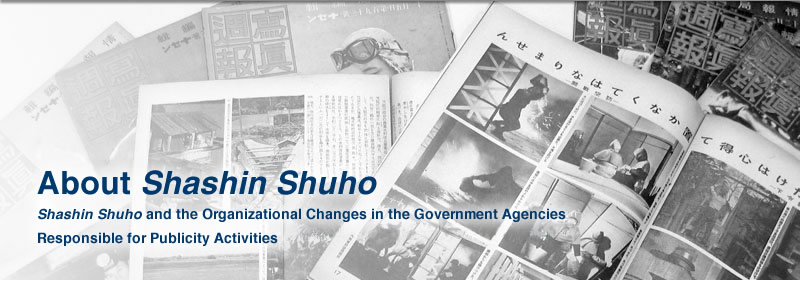 |
As noted in “2. The Formulation of the Japanese Government’s Publicity Policies,” the government agencies responsible for conducting publicity activities were organized within the Ministry of Foreign Affairs, the Ministry of War and the Ministry of Home Affairs after World War I. However, when the Manchurian Incident occurred in 1931, the information transmitted became confused, and the reports from news agencies with which the Ministry of Foreign Affairs and the Ministry of War were affiliated often differed in content. This confusion gave rise to an acute awareness of the need to implement a more centralized and consistent publicity policies. To address this need, the Information Committee was set up to formulate more consistent publicity policies. This committee was free of government regulation and composed of the publicity section members from other ministries and agencies, such as the Intelligence Department of the Ministry of Foreign Affairs and the Newspaper Group of the Ministry of War. This information committee was also involved in the foundation of Domei News Agency in 1935, which sought to integrate domestic new agencies. The Cabinet Information Committee was officially established the next year in 1936 as an organization for liaising and coordinating the key information operations handled by each respective ministry.
Document 1 at the bottom of the page is a pamphlet issued in 1933 by the Great Japan Association, which was connected to the non-government regulated Information Committee. The pamphlet says that after the Manchurian Incident, officials in the middle echelons of ministries, including the Intelligence Department of the Ministry of Foreign Affairs, played a central role in organizing the Information Committee. They also sought to take a step forward towards arousing public opinion and interest both at home and abroad through inter-ministerial cooperation (see the third image).
Document 2 is a document created by the Ministry of Foreign Affairs that describes the establishment of Domei News Agency in 1935. The document says that prior to the establishment of a new news agency, the Army believed that the officials of sections in charge of conducting information activities at each ministry needed to instill “certain doctrines and policies” within the news agency through “close cooperation and communication.” The document also states that although it was necessary to utilize the Information Committee, which “met once a week,” there were currently too many members on the committee, and thus it was essential to select a smaller number of special officials from among the committee members of each ministry to provide direction for the news agency (see the second image). Based on this recognition, arrangements were made for the Ministry of Foreign Affairs, the Ministry of War and the Ministry of the Navy to organize a special committee composed of a small number of members selected from among the officials of the sections in charge of conducting information activities. This special committee would discuss communications issues among the three parties and provide the news agency with the necessary direction “through the Ministry of Foreign Affairs” (see the third image).
Document 3 is an original manuscript signed by the Emperor on June 30, 1936, the date on which the Cabinet Information Committee was officially established as an organization in accordance with regulations for governmental organizations. The document stipulates that the Cabinet Information Committee must take responsibility for the “communication and coordination of major information-related operations handled by each agency.” In regards to the structure of Cabinet Information Committee, the document declares that Chief Cabinet Secretary must assume the chairmanship, and that the Cabinet must select the committee members from among the imperial appointees of related agencies. These selected members would then be submitted by the Prime Minister to the Emperor for sanction.
Document 4 is a document that was issued when Chief Cabinet Secretary officially announced the establishment of the Cabinet Information Committee to Vice Minister of the Army . This document comes with an attached pamphlet called the Cabinet Information Committee Handbook, which includes the regulations for governmental organizations at the time the committee is established, its duties and responsibilities, operational stipulations, and personnel matters (see the ninth to twenty-fourth images).
Document 5 is related to Shuho, which was edited by the Cabinet Information Committee as an annex to government journals that publicized general information about national administration, specific laws, and regulations to people across the country, government ministries, and agencies. This document shows how it was decided that Shuho would be distributed to its regular subscribers for free, and that it would also be available to general readers as a paid journal. In addition, the document reveals that the Cabinet Information Committee Secretary-General and Cabinet Printing Bureau Chief had asked Privy Council Chief Secretary to consider popularizing this weekly publication.
Document 6 is the first issue of Shuho that was published on October 14, 1936.
|

